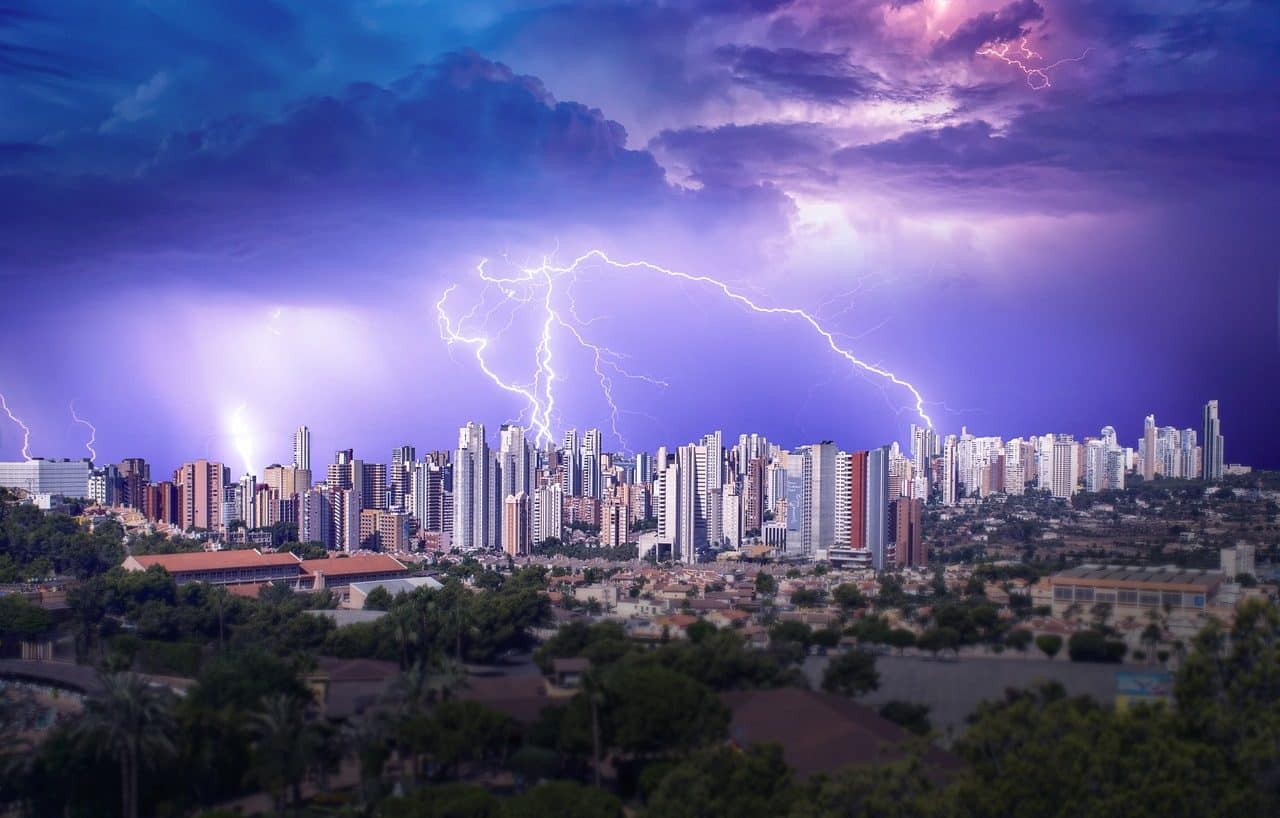
The energy released during a thunderstorm turns lightning into sources of activation energy.
Activation energy is a concept present in the field of chemical kinetics and other scientific specialties that refers to the minimum amount of energy required to start a process, phenomenon or activity.
It is essential that the molecules of a system have a basic level of energy so that a chemical reaction can occur, develop and complete. Heat is commonly the main source of activation energy , although it is not the only one (in a photochemical reaction , for example, the provider of activation energy is light ). In this framework, the reactant molecules manage to absorb thermal energy from their environment, which drives the acceleration of molecular movements and adds power and frequency to collisions, in addition to causing the shaking of atoms .
It is important to know, on the one hand, that a chemical reaction is only completed when the molecules reach the peak of the activation barrier . The higher this energy barrier is, say experts on the subject, the smaller the number of molecules with enough energy to be able to overcome that obstacle. Therefore, it must also be taken into account that in chemical reactions there is a close link between the activation energy and the so-called reaction rate : the higher the activation energy , the slower the thermodynamic process . It is also appropriate to mention that through catalysis it is possible, using a catalyst , to reduce the activation energy in order to increase the speed of a chemical reaction .
Types of activation energy
When searching for information related to the existing types of activation energy , the focus of interest is oriented, for example, to categories that are linked to heat energy which, being sufficient to trigger combustion , is constituted as activation energy . The minimum initial input of energy for an exothermic chemical reaction to arise (such as the combustion process) gives rise to several classifications.
Ignition sources can be caused by heat released by a mechanical ( friction or compression ), chemical ( self-ignition / spontaneous combustion ), electrical ( electric sparks , for example) or nuclear (such as nuclear fusion ) phenomenon or process.
As noted when consulting the theory, two major origins of the activation energy that leads reactants to become products are generally recognized: one is nature (the energy released by lightning during a storm reaches the activation energy , to describe a specific case) and another is the activity or effort of the human being to generate it.

In order to be triggered, a chemical reaction requires a minimum amount of energy, known as activation energy.
Importance
Activation energy is extremely necessary and important. Without it it is not possible for a chemical reaction to start.
It is constructive to keep in mind that, despite being linked to each other, the notions of activation energy and activation enthalpy are not synonymous. The latter is related to the energy needed to start the reaction . Specialists have established that the activation energy , vital for the reorganization of bonds, is determined by the change that is evident in the enthalpy during the phase of passage of reactants to the one known as the activated complex . The so-called activation entropy , on the other hand, marks the level of disorder or the degree of energy redistribution in order to enable the reaction.
For calculations in which activation energy comes into play, the Arrhenius equation is specifically useful. Through it, the dependence that involves the rate constant , temperature and activation energy is verified. It should be noted that, in one way or another, the idea of activation energy achieves presence or notoriety in, for example, collision theory and transition state theory .

Heat, a spark or a flame, provide the activation energy that allows the development of combustion, a process that also requires the use of a fuel.
Examples of activation energy
The examples can help make it easier to understand what and how activation energy is. Specifically, analyzing the combustion process it comes to light that the activation energy arises from a spark or a flame that comes into contact with a fuel .
Due to its characteristics and effects, lightning (that is, a naturally occurring electrostatic discharge) that arises in the context of a strong storm can also be a source of activation energy .
To achieve a sufficient level of energy in order to reach the transition state , on the other hand, catalysts are used, classified as heterogeneous or homogeneous depending on the existence, or not, of a catalyst that coincides with the substrate in a phase. With them, as can be deduced from practice and scientific experimentation, it is feasible to increase the reaction rate or make a certain reaction develop at a lower temperature than the initial one. The case of inhibitors is different, since they have the ability to deactivate catalysis .
